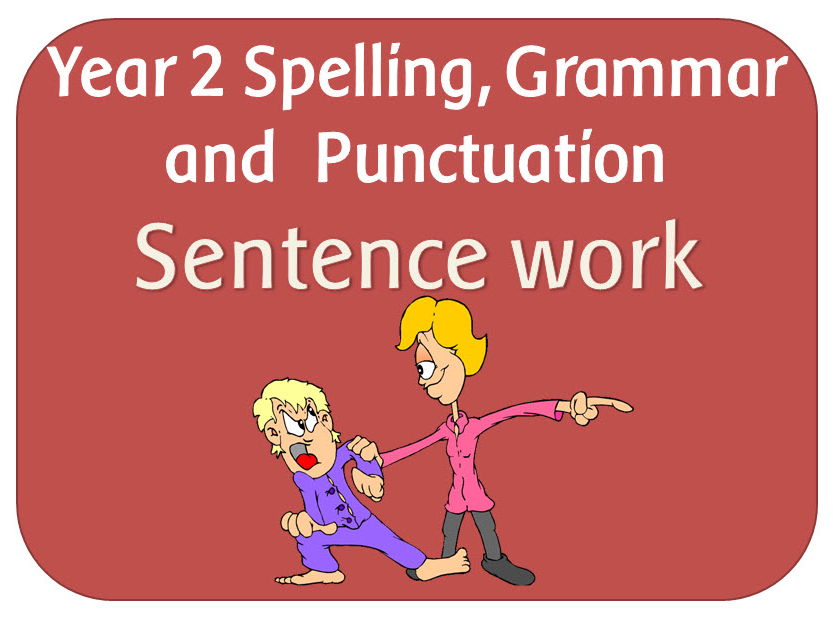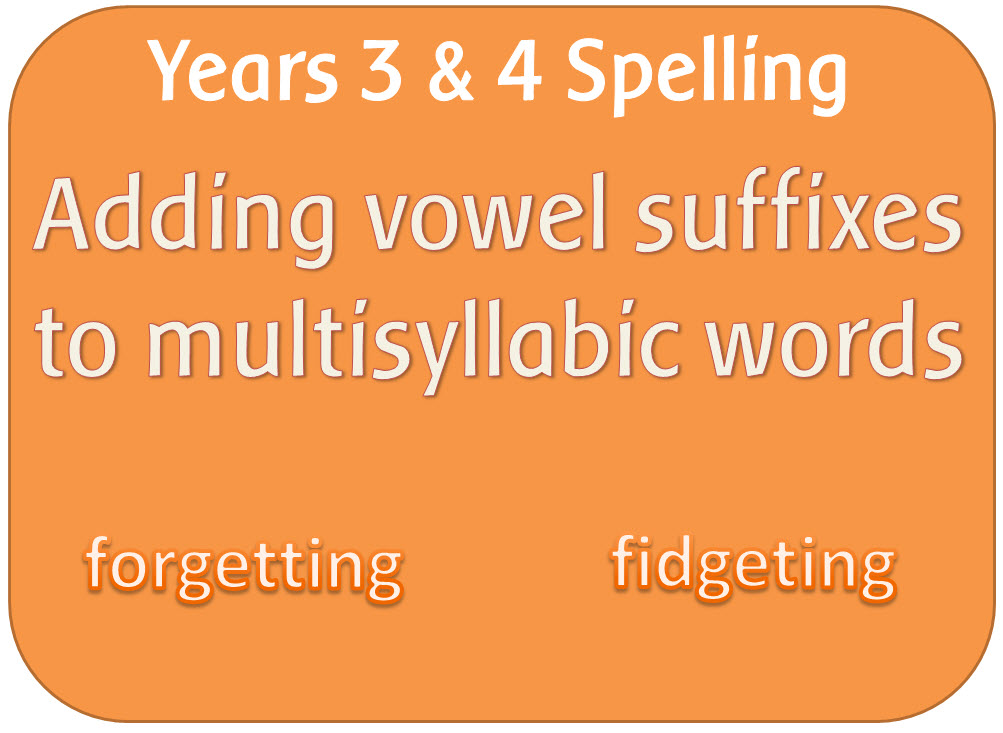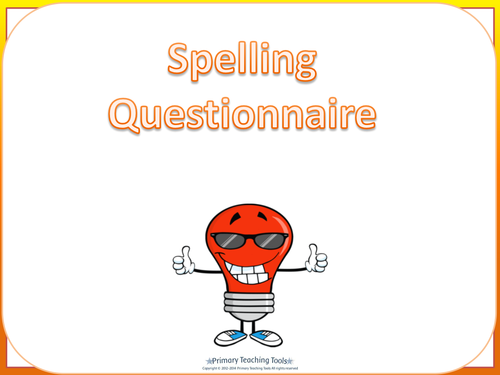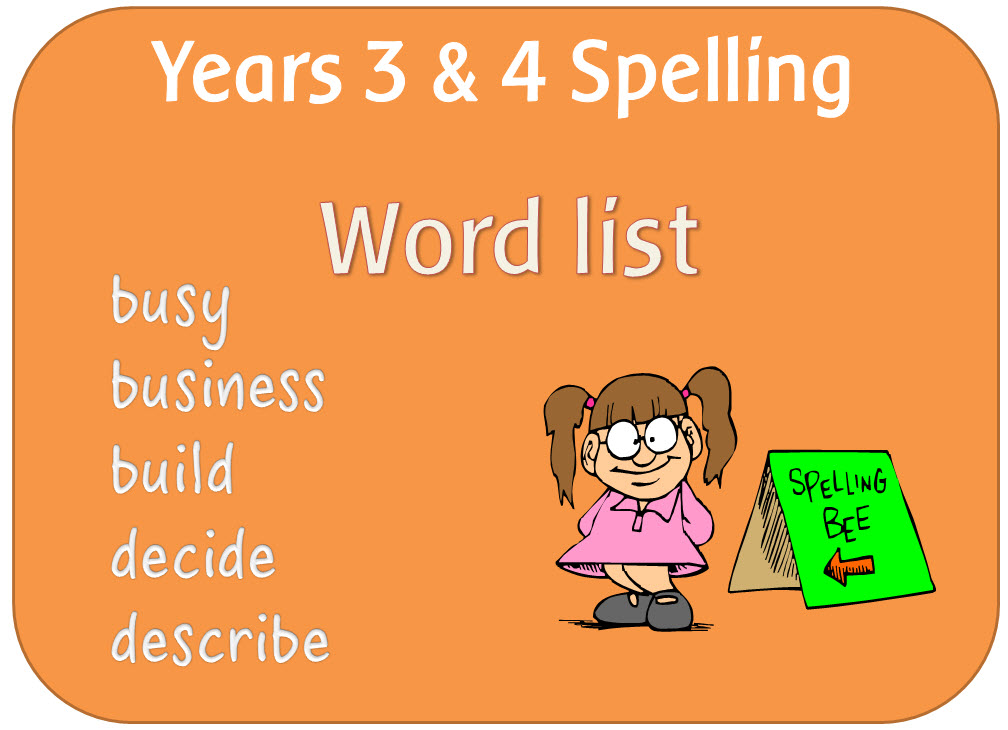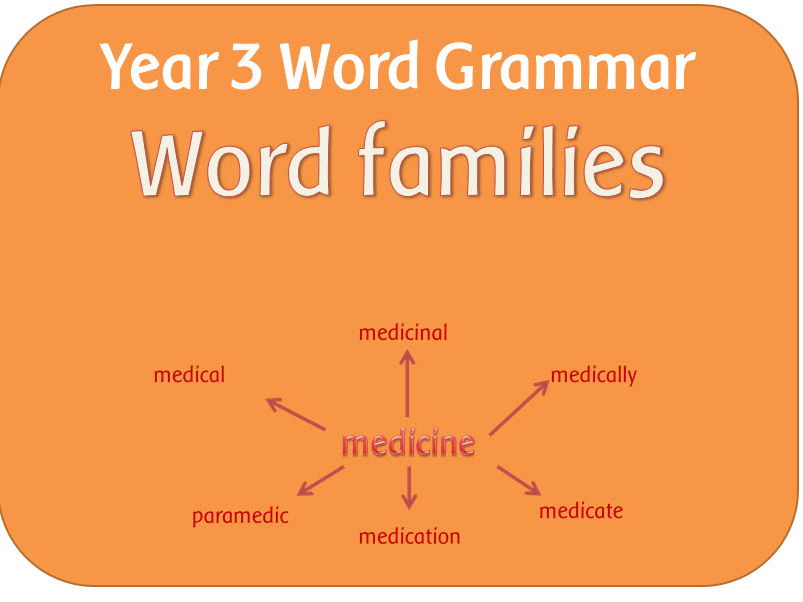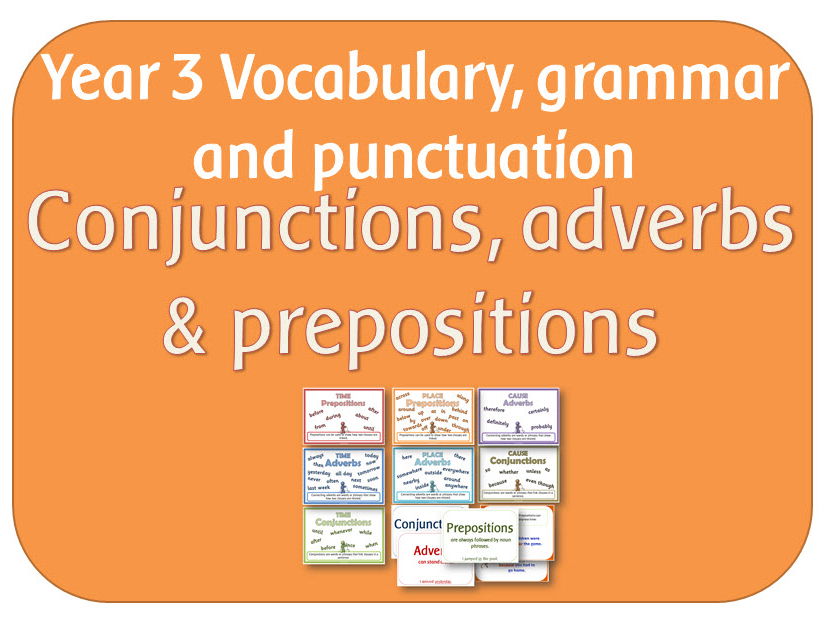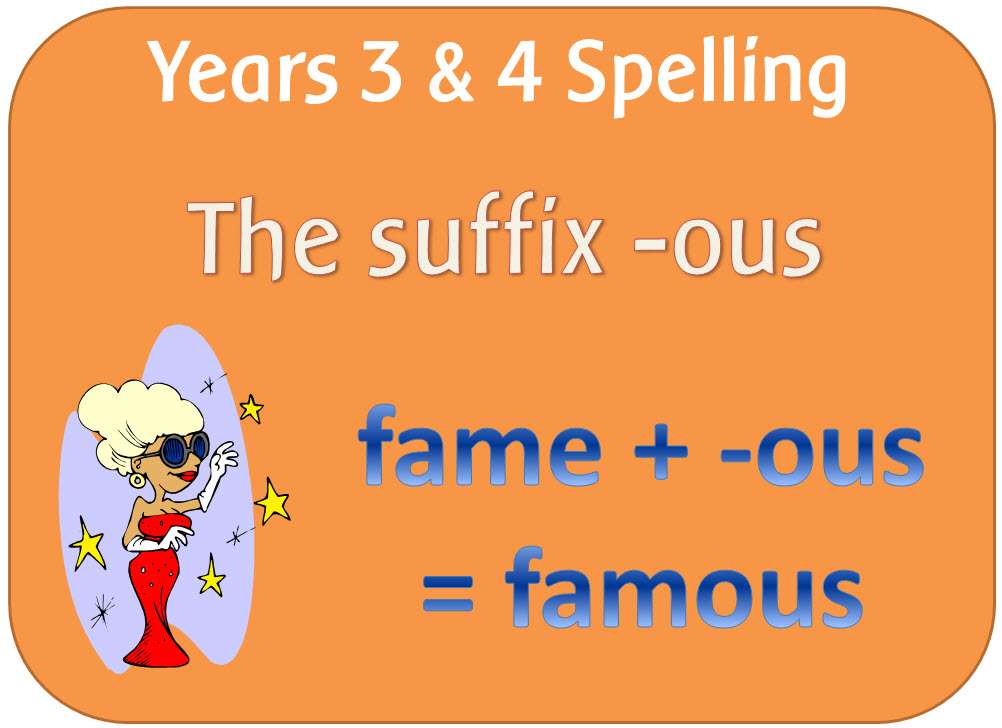
404Uploads
1101k+Views
694k+Downloads
English

SPaG Year 1 Punctuation: Capital letters, full stops, question marks & exclamation marks
Spelling resources to teach the statutory requirements in Appendix 2 of the English curriculum:
Punctuation: Separation of words with spaces; Introduction to capital letters, full stops, question marks and exclamation marks to demarcate sentences; Capital letters for names and for the personal pronoun I.
PowerPoint files:
Introduction to exclamation marks: Short presentation explaining when to use exclamation marks
Introduction to full stops: Short presentation explaining when to use full stops
Introduction to question marks: Short presentation explaining when to use question marks
Capital letters - when to use them: Looks at occasions where capital letters should be used, with an activity to test the children’s understanding at the end.
Capitals and punctuation quiz: Interactive activity where the children have to decide what is wrong with each sentence.
Jake’s full stop: A story that shows what happens when full stops are left out of sentences.
Sentences and punctuation: Recap on sentences and punctuation, with an activity at the end.

SPaG Year 2 Spelling: The /É”:/ sound spelt a before l and ll
A set of resources to teach children that the /ɔ:/ sound (‘or’) is usually spelt as a before l and ll.

SPaG Year 2 Spelling: The /i:/ sound spelt –ey
A powerpoint lesson looking at words such as key, monkey, donkey etc. The pack also includes a word list, wordsearch, crossword and outline planning.

SPaG Year 2 Text: Present and past tense and the progressive form of verbs
Four powerpoints looking at past and present verb tenses.
POWERPOINTS
Introduction to tenses: Explains what tense means, and past and present tense, giving examples including the progressive form of verbs.It ends with some examples and opportunities for children to change the tenses of sentences.
Changing present into past tense: Sentences to change
Thinking of verbs and past and present tense: Look at pictures and describe the actions in the present and the past tenses.
Irregular past tense verbs: Explanation and lists of irregular past tense verbs.

SPaG Year 2 Sentences: Statements, questions, exclamations or commands
A lesson explainint the difference between statements questions exclamations and commands, with 2 activities.
DIFFERENT TYPES OF SENTENCES
POWERPOINT
Explains the difference between a statement, question, exclamation and a command, and how the grammatical patterns vary
ACTIVITIES
Different types of sentences - writing an advertisement x 2

SPaG Year 2 Word: Formation of adjectives using suffixes such as -ful or -less
6 powerpoints looking at adding different suffixes to make adjectives, plus a worksheet:
POWERPOINTS: The first three resources below explain what adjectives are, and what each suffix does to the meaning of words it is added to. They end with a list of words to add the suffix to, and explain how the meaning of the word has changed.
Formation of adjectives by adding ful
Formation of adjectives by adding less
Formation of adjectives by adding y
Formation of adjectives ful and less recap: Goes over the two suffixes then ends with an activity to change words by adding ful or less
Adding suffixes to words in sentences: Pictures to encourage the children to make adjectives from root words.
Think of adjectives: Different pictures for the children to look at and think of describing words using the suffixes ful y and less.
ACTIVITIES
Formation of adjectives worksheet: Writing sentences to describe pictures

SPaG Year 2 : Sentence punctuation and commas for lists
2 powerpoint lessons explaining the use of capital letters, full stops, question marks and exclamation marks to demarcate sentences and the use of commas to separate items in a list.

SPaG Year 2 Terminology powerpoint
An explanation of noun, noun phrase, statement, question, exclamation, command, compound word, adjective, verb, suffix, adverb, tense, apostrophe and comma.

SPaG Year 3 & 4 Spelling: The suffix -ly
Resources to teach the spelling guidelines for adding the suffix ly
POWERPOINTS
The Suffix -ly: Recaps what an adjective and adverb are, and explains how the suffix -ly can be added to an adjective to form an adverb. It explains the rules for adding the suffix, and also the exceptions.(If the root wrod ends in y with a consonant letter before it, the y is change to i, but only if the root word has more than one syllable. / If the root word ends with le, the le is changed to ly. / If the root word ends with ic, then ally is added except in the word publicly.
PDF (PRINTABLE) RESOURCES
Look Write Cover Check: For spelling practice
Word cards containing the suffix ly
Adverbs ending ly worksheet
TEACHER RESOURCES
Word list
Adaptable outline plan

SPaG Year 3 & 4 Spelling: Adding suffixes beginning with vowels to words of more than one syllable
A lesson explaining the rules of how to add vowel suffixes to words of more than one syllable, plus activities and a word list.

SPaG Year 3 & 4 Spelling: Words with endings sounding like /ʒə/ or /tʃə/ (-sure & -ture)
Resources to teach the spelling guidelines for spelling words with endings sounding like /ʒə/ or /tʃə/
POWERPOINTS
Words ending sure: Explains the word ending 'zh-er' and gives examples of common words ending in sure. It ends with a spelling activity.
Words ending sure: Explains the word ending 'ch-er', giving examples of words ending in ture. It also explains that some words might sound like they end ture, but to check whethere they are words with the -er suffix such as teacher or richer. It ends with a spelling activity.
PDF (PRINTABLE) RESOURCES
Look Write Cover Check: For spelling practice
sure word cards
ture word cards
sure wordsearch
ture wordsearch
Although every effort has been made to check wordsearches for unintentional inappropriate words, it is recommended that teachers double check them before giving to children.
TEACHER RESOURCES
Word list
Adaptable outline plan

SPaG Year 3 & 4 Spelling: Words with the /ʃ/ sound spelt ch
POWERPOINT: Explains that these type of words come from the French language. It gives examples of the most common words with this grapheme then ends with a writing activity.
PDF (PRINTABLE) RESOURCES:
Look Write Cover Check: For spelling practice
Ch for the sh sound worksheet
Ch for the sh sound picture worksheet
Wordsearch
TEACHER RESOURCES:
Word list
Adaptable outline plan

KS2 Spelling activity sheets
A variety of pdf sheets that can be used for different spelling activities. They include:
Acrostic poems
Bubble words
Colourful words
Cut out words
Look write cover check spelling sheet
Rainbow spellings
Shape words
Silly Sentences
Spelling with both hands
Stories with spellings
Word search with spellings
Words in words
Writing a poem
Writing fun

SPaG Year 3 & 4 Spelling: Word lists
Resources to teach the spellings of the words in the years 3 and 4 word list
INTRODUCTORY POWERPOINT: Spelling strategies: Looks at different ways to learn spellings for children to use
16 SPELLING POWERPOINTS:
The words are organised into 15 different categories according to how they are spelt. Each category contains between 6 and 9 words so that they can also be used for spelling tests.
Each category contains a PowerPoint with a page for each word and a range of strategies to help remember the spelling of each. The strategies include:
Looking at the history of the word
Looking at words in the same word family
Looking at spelling rules
Looking at root words and affixes
Using speak and spell
Highlighting unusual spelling
Mnemonics
Looking at words within the word
Looking at words with similar spelling patterns
The categories are as follows:
Spelling words using phonic knowledge
Words with schwa digraph 1
Words with schwa digraph 2
Words with schwa spelt a
Words with schwa spelt e and i
Words with schwa spelt o and u
Silent letters 1
Silent letters 2
Words with the grapheme ea
Words with the grapheme gh
Words with the letter string ough
Words with the phonemes tch and sh
Words with unusual correspondences 1
Words with unusual correspondences 2
Words with unusual correspondences 3
Words with unusual correspondences 4

SPaG Year 3 Grammar: Word families based on common words
3 POWERPOINTS:
Words and families: Explains what word families are and how to make them. It follows with 10 common exception words and related words .
Roots, affixes and word families: Explains how word families can be built by using affixes. Gives examples of the word family related to the word 'act' and also the word 'light'.
Word families: Building words using a matrix of prefixes, root words and suffixes.
PDF WORKSHEETS & ACTIVITIES:
Cards (x6 – act/give/light/pass/press/sign) containing words belonging to each word family
Word derivation sheet – blank
Word family – give
Word family – pass
Word family –press
Word family –sign
Word list – Latin root words and families (extension work)
Plus a Y3 VG&P plan

SPaG Year 3 Sentence Grammar: Time, place & cause using conjunctions, adverbs & prepositions
Includes a powerpoint, vocabulary cards and a set of posters.
POWERPOINT: explains the difference between conjunctions, adverbs and prepositions, giving examples of where and how to use them.
4 sets of display:
SET 1 Time place and cause connectives: This set contains 3 headings and sets of words in clouds to display around the headings time, cause and place. There are blank clouds for you to add your own.
SET 2) Conjunctions adverbs and prepositions cards: In this set there are 5 words per A4 page which can be cut up for display. The words are organised into conjunctions, adverbs and prepositions with an A4 title for each.
SET 3) Conjunctions, adverbs and prepositions posters: These posters splits the connectives into sets of Time/Cause/Place and conjunctions/adverbs/prepositions. There are 7 A5 pages plus a title page.
SET 4) Co-ordinating and subordinating conjunctions: These posters explain the difference between the two types of conjunctions and give examples of each in clouds.

SPaG Year 3 Terminology powerpoint
A powerpoint explaining the terms adverb, preposition, conjunction, word family, prefix, clause, subordinate clause, direct speech, inverted commas, speech marks, vowels and consonants

SPaG Year 4 Sentence Grammar: Expanded noun phrases
A pack of powrpoints and printable resources looking at noun phrases that are expanded by the addition of modifying adjectives, nouns and preposition phrases.
POWERPOINTS:
Modifying adjectives: Recap of how adjectives can be used to expand noun phrases. Gives images at the end for practice of adding adjectives.
Modifying nouns: Introduction to how nouns can modify noun phrases, eg kitchen table, office chair. Gives images at the end where the children have to use nouns to specify more information about the main noun.
Modifying preposition phrases: Explains what preposition phrases are and shows how they can be used to specify where the noun is. It gives examples and ends with images where the children can think of preposition phrases.
PRINTABLE PDF FILES:
Modifying adjectives worksheet
Modifying nouns worksheet
Modifying preposition phrases worksheet
Adjectives posters: Lots of different adjectives to display
Preposition posters: Lots of prepositions/ preposition phrases to display

SPaG Year 3 & 4 Spelling: Adding the suffix -ous; rules and exceptions
Resources to teach the spelling guidelines for adding the suffix ous
–our is changed to –or before –ous is added.
A final ‘e’ of the root word must be kept if the /dʒ/ sound of ‘g’ is to be kept.
If there is an /i:/ sound before the –ous ending, it is usually spelt as i, but a few words have e.
POWERPOINTS
Adding the suffix ous - Regular spellings: Explains that sometimes the root word is obvious and the usual rules apply for adding suffixes beginning with vowel letters. It gives examples of words where there is no obvious root word. Gives opportunities for children to add ous to different words.
Adding the suffix ous - our to or and exceptions: Gives examples of words where our is changed to or before ous is added; A final ‘e’ of the root word must be kept if the /dʒ/ sound of ‘g’ is to be kept; and If there is an /i:/ sound before the –ous ending, it is usually spelt as i, but a few words have e. Gives opportunities for children to add ous to different words.
PDF (PRINTABLE) RESOURCES
Look Write Cover Check: For spelling practice
Words containing the suffix ous worksheet x 3
Wordsearch - words with the suffix ous
Although every effort has been made to check wordsearches for unintentional inappropriate words, it is recommended that teachers double check them before giving to children.
TEACHER RESOURCES
Word list
Adaptable outline plan

SPaG Year 3 punctuation: Introduction to inverted commas to punctuate direct speech
A powerpoint explaining what direct speech is and how to use inverted commas when writing it down.





